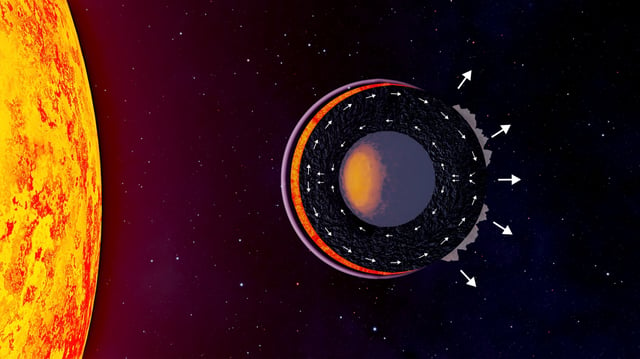Overview
- The Nature Astronomy paper by Charles-Édouard Boukaré and colleagues introduces a comprehensive model for coupled interior–atmosphere evolution on tidally locked lava planets.
- Numerical simulations identify two evolutionary end states: fully molten young planets with bulk-composition atmospheres and mostly solid older planets with shallow magma oceans and atmospheres depleted in volatile metals.
- The framework tracks chemical differentiation through a distillation-like process in which elements partition between vapor, liquid and solid phases over billions of years.
- Predictions from the study secured 100 hours of James Webb Space Telescope infrared observations to empirically distinguish young molten worlds from older solidified counterparts.
- Upcoming JWST data aim to provide dynamic, time-resolved insights into how extreme thermal environments shape rocky planet formation and long-term evolution.
